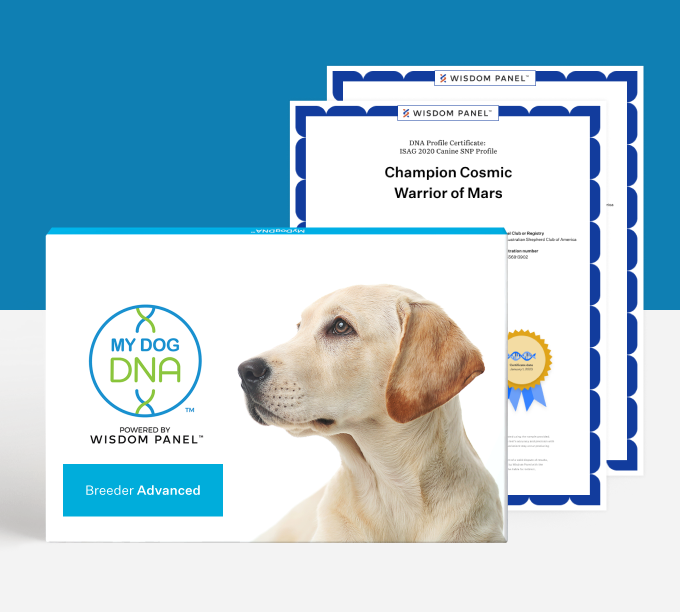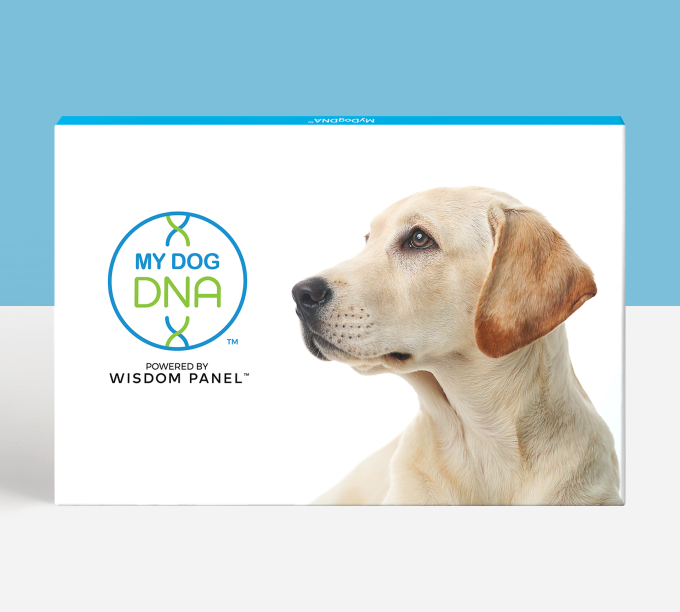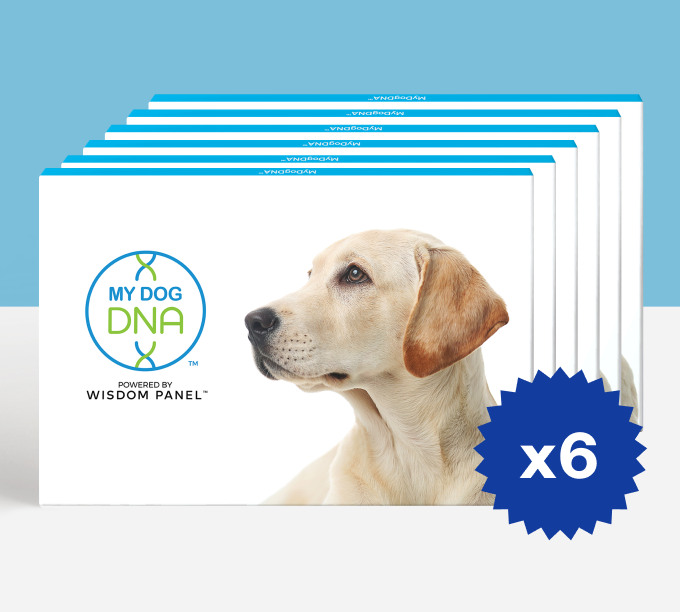Canine atopic dermatitis (cAD) or atopy is a common yet complex condition that affects 15-30% of dogs. This chronic skin condition often presents as relentless itching and recurring secondary infections, which can negatively impact a dog’s quality of life and can be distressing for owners. Without proper management, cAD can lead to significant challenges, including financial strain and emotional distress for owners.
As a breeder, you are in a unique position to provide each puppy with an environment to support proper immune system development as well as provide new puppy owners with education and resources, and guide them throughout the dog’s life. By understanding the causes, signs, and management strategies for cAD, you can empower new owners and contribute to healthier, happier lives for the dogs you raised.
What is Atopic Dermatitis?
Canine atopic dermatitis is a chronic inflammatory skin condition often linked to the production of antibodies in response to environmental allergens such as pollen, dust mites, and mold. While the exact causes of cAD are not fully understood, researchers agree that a combination of genetic predisposition, immune system irregularities, and skin barrier dysfunction contribute to its onset. Dogs with cAD often experience intense itching, redness, and secondary skin or ear infections that can become recurring if not managed effectively.
Many breeds, including Boxers, Bulldogs, Golden Retrievers, Labrador Retrievers, German Shepherd Dogs, French Bulldogs, Pugs, and West Highland White Terriers, among other breeds are genetically predisposed to atopy. Beyond genetics, environmental factors—particularly those encountered during puppyhood—play a vital role in shaping the developing immune system.
Diagnosing atopic dermatitis
Diagnosing cAD in dogs is a process of elimination, as there is no definitive diagnostic test. Veterinarians rely on a dog’s clinical history and physical examination, combined with efforts to rule out other causes of itching and skin inflammation. Common signs of cAD include:
-
Increased itching, licking, scratching, chewing, rubbing or scooting
-
Head shaking
-
Reddish-brown saliva stains on fur, often around the feet
-
Red skin or scabs on paws, armpits, joints, belly and face
-
Foul odour to skin or ears, which may indicate a secondary infection
Other conditions, such as flea allergy dermatitis, food allergy, or mange, can mimic cAD, and each must be excluded through systematic testing and treatment. Flea control, secondary infection management, and carefully monitored diet trials are often the first steps. Allergy testing, whilst not diagnostic, can help identify environmental triggers and guide treatment. By recognising signs early, breeders can encourage timely veterinary evaluation and treatment.
Wisdom discovery on the genetics of atopy
The genetics of atopy in dogs reveal a complex mix of inherited traits that contribute to the condition’s development. Research has shown that predisposition often stems from variations in genes that affect skin barrier function and immune system regulation. However, the genetic factors contributing to cAD are not uniform across breeds, which explains variations in signs and treatment responses.
Until recently, no genetic test for atopy risk has been developed due to these complexities. However, Wisdom Panel's™ scientists and Banfield veterinary hospitals, and with assistance from Linnaeus Vets and the Mars Petcare Biobank, a groundbreaking discovery has been made. In the largest ever genetics study of canine atopy a variant in a gene called SLAMF1, an immune system regulatory protein, has been identified that increases the risk of atopy development by a minimum of 2-fold in the Boxer and French Bulldog, two breeds known to be at higher risk of atopy. This variant has an additive effect, with one copy of the variant moderately increasing risk and with two copies causing a more significant increase in risk. Unfortunately, these breeds are also found to have a high frequency of the variant in our testing, at 50% in French Bulldogs and 40% in Boxers. The variant is also found in many other breeds, but further validation work is needed to confirm the significance. Testing for the SLAMF1 variant is now available through Canine Genetic Testing at the University of Cambridge and will be bundled with MyDogDNA™, to allow breeders to consider diversity in their breeding decisions. The SLAMF1 test will become a standard part of MyDogDNA™ in 2026.

Potential biomarkers for atopic dermatitis
In addition to the research focused on the heritability of atopic dermatitis in dogs, advancements in biomarker research are shedding light on the complex nature of canine atopy, offering promising avenues for diagnosis and management. Biomarkers—measurable indicators of biological conditions—are invaluable in identifying disease presence, monitoring progression, and evaluating treatment responses. In canine AD, researchers are investigating various potential biomarkers:
-
Chemokines: These signaling proteins regulate immune responses. Studies have measured levels of specific chemokines in the blood and skin of atopic dogs to assess their correlation with disease severity. Findings suggest that certain chemokines could serve as indicators of cAD progression, aiding in monitoring the disease over time.
-
MicroRNAs (miRNAs): These small, non-coding RNA molecules play roles in gene expression regulation. Research has identified altered miRNA expression profiles in dogs with AD, indicating their potential as biomarkers for the disease.
-
Lipid Profiles: Lipids are crucial components of the skin barrier. Alterations in skin and blood lipid compositions have been observed in atopic dogs, suggesting that lipid profiling could assist in diagnosing AD and monitoring treatment efficacy.
The identification of reliable biomarkers holds promise for more precise diagnostic tools and personalised treatment strategies for canine AD. For breeders, staying informed about these developments is essential, as they could lead to earlier detection and improved management of cAD in breeding lines, ultimately enhancing the well-being of affected dogs.
Preventing canine atopic dermatitis
There is currently no cure or guaranteed prevention of cAD, and almost all studies in dogs to date have been reactive, meaning they focus on treatment of existing atopy, rather than prevention. However, scientists believe that atopic dermatitis develops as a complex interaction between the patient and their environment (outside-inside-outside hypothesis). Early evidence suggests that although atopy is heritable and we know there is a component of genetic risk that could be managed, gut and skin microbiome, diet and environment play a role in development as well.
Environment affects development of AD, particularly during the puppy phase when a dog’s immune system and skin barrier are still maturing. Allergens such as dust mites, mold, and pollen can sensitise puppies, triggering immune responses that lead to inflammation. Excessive exposure to irritants or poor air quality during this period can exacerbate the risk of developing cAD.
Breeders can minimise these environmental impacts by providing allergen-free bedding, maintaining clean but not overly sanitised spaces, and ensuring optimal nutrition to support healthy skin development. Puppies exposed to diverse but balanced microbiota environments are thought to have improved immune regulation, potentially reducing the risk of allergies and cAD later in life.
A few studies have shown that feeding a quality probiotic to the bitch during pregnancy and nursing has lasting protective effects on severity of atopy in the puppies. In humans, some studies have shown that daily application of emollients can delay or prevent development of atopy, suggesting interventions to restore the skin barrier may be effective, but similar such studies in dogs are lacking.

Managing atopic dermatitis in affected dogs
cAD is a lifelong condition, but with proper management, its impact can be minimised. Here’s how breeders can support owners in caring for affected dogs:
-
Environmental Management: Encourage owners to reduce exposure to allergens by using air filters, keeping homes clean, and managing outdoor time during high-pollen seasons.
-
Nutritional Support: Recommend diets enriched with essential and omega fatty acids and ceramides to strengthen the skin barrier. Puppies fed fortified diets have shown lower rates of cAD.
-
Veterinary Care: Suggest veterinary guidance for treatments like monoclonal antibodies (Cytopoint) or Janus kinase inhibitors (Apoquel, Zenrelia), which provide targeted relief for itching and inflammation without the long-term side effects of steroids.
-
Skin Care: Emphasize the importance of hypoallergenic shampoos and topical lipid formulations to repair the skin barrier and reduce allergen penetration.
Creating a better future for dogs with atopic dermatitis
Canine atopic dermatitis may be complex, but with knowledge and proactive care, it can be effectively managed. As a breeder, your role in recognising signs, supporting owners with resources, and guiding them throughout a dog’s life is invaluable. By embracing advancements in genetic testing, biomarkers testing, environmental management, and treatment options, you help ensure that dogs affected by AD can lead comfortable, fulfilling lives with their families.
References:
Franco J, Rajwa B, Gomes P, HogenEsch H. Local and Systemic Changes in Lipid Profile as Potential Biomarkers for Canine Atopic Dermatitis. Metabolites. 2021 Sep 30;11(10):670. doi: 10.3390/metabo11100670. PMID: 34677385; PMCID: PMC8541266.
Gedon NKY, Mueller RS. Atopic dermatitis in cats and dogs: a difficult disease for animals and owners. Clin Transl Allergy. 2018 Oct 5;8:41. doi: 10.1186/s13601-018-0228-5. PMID: 30323921; PMCID: PMC6172809.
Halliwell R. Revised nomenclature for veterinary allergy. Vet Immunol Immunopathol. 2006 Dec 15;114(3-4):207-8. doi: 10.1016/j.vetimm.2006.08.013. Epub 2006 Sep 26. PMID: 17005257.
Hensel P, Saridomichelakis M, Eisenschenk M, Tamamoto-Mochizuki C, Pucheu-Haston C, Santoro D; International Committee on Allergic Diseases of Animals (ICADA). Update on the role of genetic factors, environmental factors and allergens in canine atopic dermatitis. Vet Dermatol. 2024 Feb;35(1):15-24. doi: 10.1111/vde.13210. Epub 2023 Oct 15. PMID: 37840229.
Hillier A, Griffin CE. The ACVD task force on canine atopic dermatitis (I): incidence and prevalence. Vet Immunol Immunopathol. 2001 Sep 20;81(3-4):147-51. doi: 10.1016/s0165-2427(01)00296-3. PMID: 11553375.
Forman, O P, Freyer, J et al. A splice donor variant in SLAMF1 is associated with canine atopic dermatitis. Front. Vet. Sci. 2025 Jun; 12. doi: 10.3389/fvets.2025.1550617
Kaur G, Xie C, Dong C, Najera J, Nguyen JT, Hao J. PDE4D and miR-203 are promising biomarkers for canine atopic dermatitis. Mol Biol Rep. 2024 May 11;51(1):651. doi: 10.1007/s11033-024-09605-3. PMID: 38734860; PMCID: PMC11088561.
Shaw SC, Wood JL, Freeman J, Littlewood JD, Hannant D. Estimation of heritability of atopic dermatitis in Labrador and Golden Retrievers. Am J Vet Res. 2004 Jul;65(7):1014-20. doi: 10.2460/ajvr.2004.65.1014. PMID: 15281664.
Marsella R, Santoro D, Ahrens K. Early exposure to probiotics in a canine model of atopic dermatitis has long-term clinical and immunological effects. Vet Immunol Immunopathol. 2012 Apr 15;146(2):185-9. doi: 10.1016/j.vetimm.2012.02.013. Epub 2012 Mar 1. PMID: 22436376.
Fernandes B, Alves S, Schmidt V, Bizarro AF, Pinto M, Pereira H, Marto J, Lourenço AM. Primary Prevention of Canine Atopic Dermatitis: Breaking the Cycle-A Narrative Review. Vet Sci. 2023 Nov 16;10(11):659. doi: 10.3390/vetsci10110659. PMID: 37999481; PMCID: PMC10674681.








